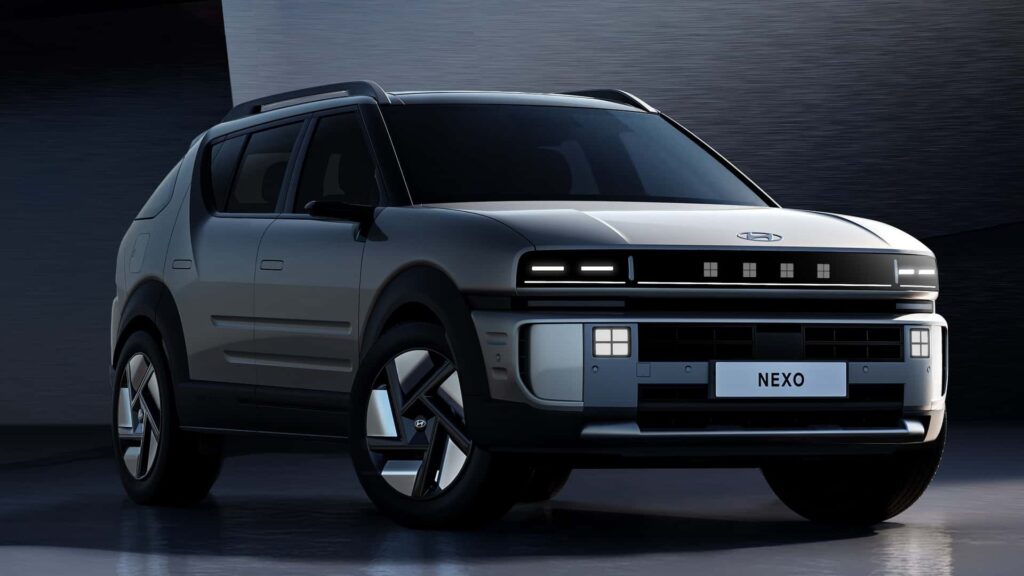But despite all these improvements, the biggest challenge for the Hyundai Nexo remains the lack of hydrogen fueling stations. While the car can now drive over 435 miles on a full tank and has more power with bigger hydrogen tanks, finding a place to refuel can still be a major issue. This is especially true in markets outside of California, where the infrastructure for hydrogen fueling is even more sparse.
The high cost of hydrogen fueling and the limited availability of fueling stations continue to be significant barriers to the widespread adoption of fuel cell electric vehicles like the Hyundai Nexo. Without a comprehensive network of hydrogen fueling stations, even the most advanced FCEVs are limited in their practicality and appeal to consumers.
Despite these challenges, Hyundai is pushing forward with the new Nexo, hoping to build on the limited success of the previous generation. With improved power and range, as well as innovative features like vehicle-to-load capability, the Nexo is an impressive vehicle on paper. However, until the infrastructure for hydrogen fueling catches up, the full potential of this advanced FCEV may remain unrealized.
For now, the Hyundai Nexo stands as a symbol of the promise and the challenges of hydrogen fuel cell technology. As automakers continue to invest in alternative powertrains and sustainable transportation solutions, the success of vehicles like the Nexo will depend not just on technological advancements, but also on the development of the necessary infrastructure to support them.
Only time will tell if hydrogen fuel cell vehicles like the Hyundai Nexo can overcome these obstacles and become a viable and widespread alternative to traditional gasoline-powered cars. In the meantime, the Nexo remains a fascinating glimpse into the future of automotive technology and the ongoing quest for cleaner, greener transportation options.
Hyundai has recently unveiled the second-generation Nexo FCEV, boasting several key upgrades over its predecessor. One notable improvement is the increased capacity of the hydrogen tanks, which can now hold up to 6.69 kilograms of hydrogen and 162.2 liters in volume. This is a significant upgrade from the outgoing model, which had a tank capacity of 6.33 kilograms and 156.6 liters.
The new Nexo is capable of driving over 435 miles (700 km) on a full tank of hydrogen, according to Hyundai. This impressive range was achieved using the Korean Ministry of Trade, Industry and Energy standard, surpassing the outgoing model’s maximum EPA range of 380 miles (611 km). With this increased range, the Nexo can now serve as both a daily driver and a reliable option for road trips.
Despite these advancements, one major obstacle still remains for hydrogen-powered vehicles: the fueling infrastructure. While the Nexo’s improved range and performance make it a viable option for consumers, the availability of hydrogen fueling stations is crucial for its widespread adoption.
In terms of interior features, the new Nexo offers seating for five passengers and a modern cockpit equipped with dual 12.3-inch curved displays. These displays run Hyundai’s latest Connected Car Navigation Cockpit (ccNC) system, which supports over-the-air software updates and wireless connectivity for Apple CarPlay and Android Auto. The system also provides real-time information on hydrogen fueling stations along the route.
Additionally, a 12-inch head-up display in the Nexo shows autonomous driving data and rear-side safety alerts. For audiophiles, a premium Bang & Olufsen sound system with up to 14 speakers is available as an option, enhancing the driving experience for passengers.
Overall, the second-generation Hyundai Nexo FCEV represents a significant step forward in hydrogen fuel cell technology. With improved range, performance, and advanced features, the Nexo is poised to compete in the increasingly crowded crossover segment while offering a greener alternative to traditional gasoline-powered vehicles.

